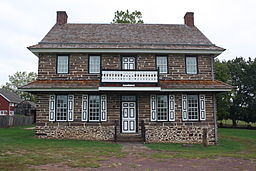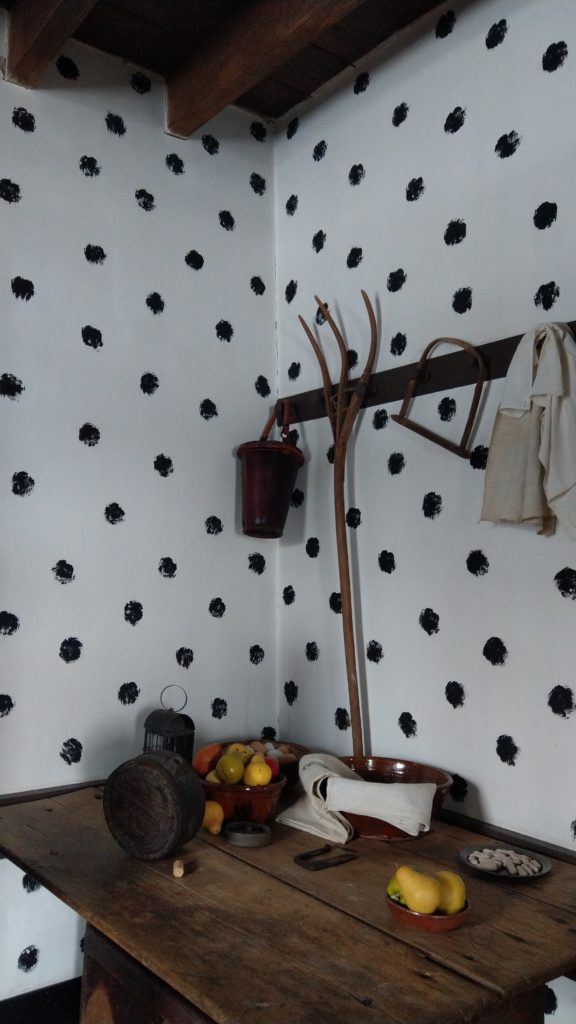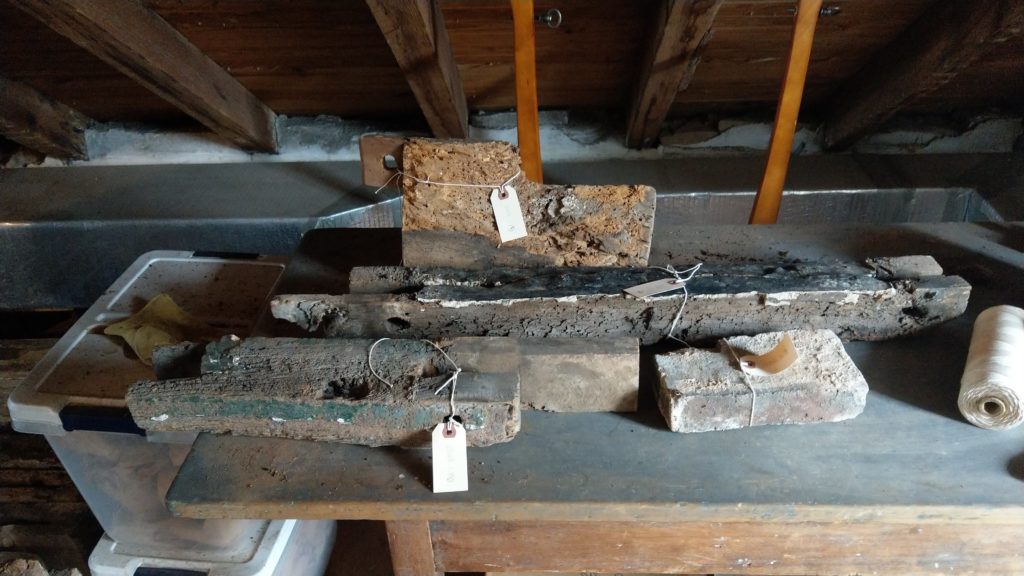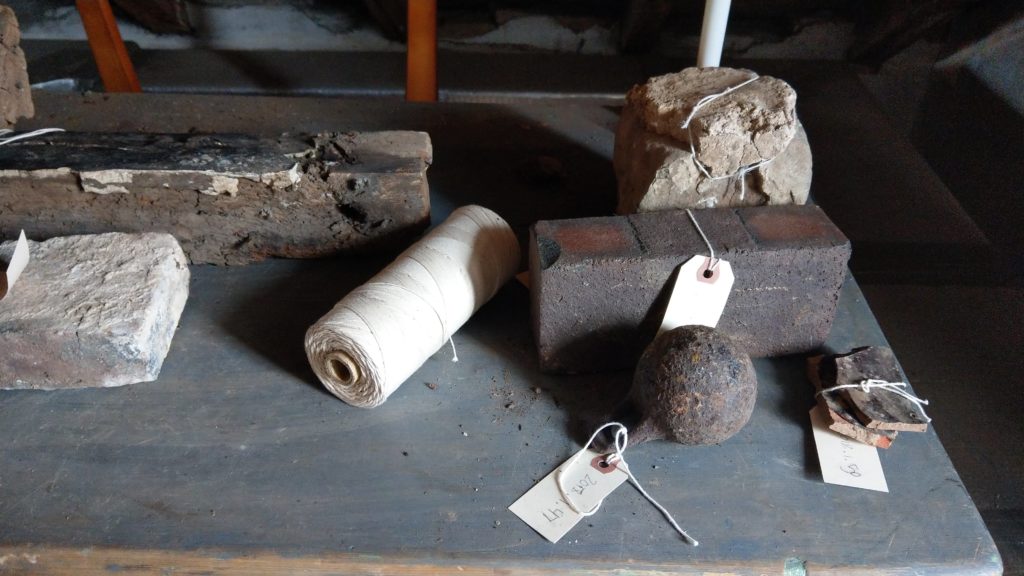The Peter Wentz Farmstead is a fascinating Montgomery County landmark.
Built in 1758 by first-generation German-American farmer Peter Wentz and his wife Rosanna, the impressive Georgian home is perhaps most famous for its role in the American Revolution, having served as George Washington’s headquarters in the run-up to and aftermath of the Battle of Germantown in October 1777.

Owned and operated by Montgomery County since 1969, the home and its working farmstead have been open to the public for daily tours for over four decades. Visitors are treated to much more than a glimpse of where Washington slept; the home’s decidedly funky polka dot wall treatments are like nothing you’ve ever seen on a historic house tour, the working Colonial kitchen is a feast for the senses, and a brand-new exhibit debuted just this year to honor and interpret the life of Jack, a slave held at the farmstead in the 1760s and 1770s.

The Homestead (Key# 000582) was listed the National Register of Historic Places in May 1973. You can read the nomination here.
But what isn’t on the tour, and what you rarely ever see on any historic house tour, is the attic. And like most houses, historic or not, that attic is filled with stuff. And that stuff, as former Temple University student Yen Ho recently discovered, has a history all its own.
Volunteer Help
Yen studied at Temple’s Tyler School of Art and graduated with her Bachelor of Science in Historic Preservation in May 2019.
The previous summer, Yen was volunteering for her hometown Wissahickon Valley Historical Society and looking for some real-world experience in the preservation field. “I initially wanted to major in architecture design because of my passion for LEGOs as a young kid,” Yen explains. “I was excited to be part of the architecture program until I learned about Temple’s preservation program. I discovered that preservation could be more research-based, and that was something I really want to do in my career path.”
Through word of mouth, Yen heard about the Peter Wentz Farmstead and its curator at the time, Sarah Biehl (from work at the site from 2016 to 2019). Together, the pair crafted an independent study project to help the farmstead tackle a long-deferred goal: organizing the attic.
“Every museum and historic site probably has what we had at the Peter Wentz Farmstead,” explains Biehl. “That mysterious pile of stuff, usually in the basement or the attic, that no one really knows what to do with.”
In the case of the farmstead, a large portion of that stuff was officially their “architectural salvage collection,” a wide-ranging assortment of items collected and saved during the home’s restoration in the early 1970s. But because the collection had never been inventoried or organized, Biehl had no idea what the miscellaneous shelves and dusty boxes really contained.

Yen enthusiastically volunteered to help catalog the collection, even if the identities of some, or even most, of the objects were initially a mystery.
Attic Finds
Working one box at a time, Yen photographed, numbered, and categorized a total of 73 individual objects. She developed five distinct artifact categories– architecture, furniture, tools, miscellaneous, and unknown– and a system for identifying the more puzzling parts and pieces. “I used Google a lot,” she laughs. “My biggest challenge was knowing when to give up and call something ‘unknown.’ There was this one object I was trying to figure out for hours, a piece of wood that has a carved point on one end. It’s still a mystery to me.”

Among her favorite discoveries were two cast-iron stove plates– one in good condition and one severely rusted– that featured somewhat surprising Biblical scenes. “One was called Good for Evil 1758 and the other was called Samson and Delilah. Learning from the Wentz family through these objects was very fascinating, and the most exciting thing I experienced from my internship.” Other discoveries included objects that weren’t architectural at all, like a 1970s reproduction butter mold from the farmstead gift shop that no doubt joined the collection by mistake.
What does the future hold?
Now that the items have been properly identified and indexed, Biehl can make informed decisions about future exhibitions and deaccessions. And with a new off-site, climate-controlled storage facility in the works, items which may not have survived another two centuries in the attic will be assured a more certain future.
Yen’s future is also a little more clear after her experience at the Peter Wentz Farmstead: “My internship really motivated me to pursue a career focused on researching and cataloging at a historic place, a library, or a museum. Starting in fall 2019, I will be studying library and information science at Drexel University’s MS program.” This summer, Yen is working as Keystone intern for the PA State Historic Preservation Office.
Congratulations to Yen, and to the Peter Wentz Farmstead for nurturing her spirit of preservation, one dusty box at a time!
This week’s guest contributor is Ben Leech, a historic preservation consultant and architectural illustrator. From 2010 to 2015, he was advocacy director for the Preservation Alliance for Greater Philadelphia. He is a regular contributor to Extant Magazine and Hidden City Daily, and sits on the board of DOCOMOMO-Greater Philadelphia Chapter. He has taught at Temple University, the University of Pennsylvania, Franklin & Marshall College, Philadelphia University, and Rutgers University Camden. In 2017, he founded Archivolt Press and published two postcard books of his sketches, 36 Views of Philadelphia and 36 Views of Lancaster PA.
Comment Policy
PHMC welcomes and encourages topic-related comments on this blog. PHMC reserves the right to remove comments that in PHMC’s discretion do not follow participation guidelines.
Commenters and Comments shall be related to the blog post topic and respectful of others who use this site.
Commenters and Comments shall not: use language that is offensive, inflammatory or provocative (this includes, but is not limited to, using profanity, obscene, or vulgar comments); disparage other commenters or people; condone illegal activity; identify the location of known or suspected archeological sites; post personal information in comments such as addresses, phone numbers, e-mail addresses or other contact details, which may relate to you or other individuals; impersonate or falsely claim to represent a person or an organization; make any commercial endorsement or promotion of any product, service or publication.
If you would like to comment on other topics not related to this blog post but related to PHMC, please fill out the PHMC Contact Us Form.
Leave a Reply